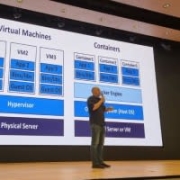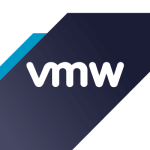
Red Hat OpenShift Primary Use Case
We already were having that microservices architecture, so there was not much change from that perspective. We had small services, so here we had to create multiple pod IDs. Even today, we are using a hybrid microservices architecture. Our DB still has two or three services that hit the same database. From that perspective, there was not much change that we did in our case.
View full review »We use it for container orchestration. Some customers don't need to go with the coordinated open source as they need a more enterprise solution, so we use OpenShift. We mainly use it to host IBM CloudSec. We are working with CloudSec for integration, CloudSec for automation, and as a prerequisite for them, they need an OpenShift.
View full review »JU
Jefferson Usianene
Infrastructure Manager at Appzone Group
I used OpenShift for the enterprise service cost system of a bank. We completed the migration of the bank's core banking system using OpenShift as the infrastructure. OpenShift acts as an orchestration platform and is used as our private cloud.
View full review »Buyer's Guide
Red Hat OpenShift
August 2025
Learn what your peers think about Red Hat OpenShift. Get advice and tips from experienced pros sharing their opinions. Updated: August 2025.
867,299 professionals have used our research since 2012.
UM
UsmanMalik
Manager IT Infrastructure at a government with 1,001-5,000 employees
We are building an application that is a containerized application, and we are using Red Hat OpenShift for that application.
View full review »SA
Shan Ahmed
System Analyst at Freelancer
The main goal is the modernization of our applications. We have a few applications running on mainframes, which increase costs. We aim to modernize them on containers and microservices. We are shifting towards Kubernetes or Docker. As an enterprise client, the best solution is Red Hat OpenShift paired with support from Red Hat.
View full review »AJ
AbdulJaleel
Senior Technical Lead at MORO
Our primary use case for Red Hat OpenShift involves leveraging its container orchestration platform to enhance application modernization efforts. We host containerized applications and integrate GPU capabilities for optimized deployment of AI workloads.
View full review »JK
Jan Kappert
OpenShift consultant at HCS Company
We have deployed OpenShift on-premises on VMware and Azure, but not the managed platform. We manage the deployment ourselves, doing our own customizations.
View full review »We help some operators implement the container platform. Some of the operators use other software, such as VMware or Whitestack. Our focus is on pushing Red Hat products. We also use OpenShift for containerized applications in IT and networks, including applications like My Mobistar, My Carlos, and Smart Wi-Fi.
View full review »MB
Matthias Bertschy
Senior Kubernetes Architect at a financial services firm with 1,001-5,000 employees
We use the solution to run our own software. Our software is different from the banking system, and it's mostly written in Java with a backend, an Angular frontend, MongoDB, and some caches.
We use OpenShift as an accelerator for our projects. We provide an environment for containerization. Our company has multiple clients using the infrastructure to build and test their applications.
We've both cloud and on-prem installation of the tool. For the cloud installation, we use the AWS cloud.
View full review »ES
EisaShaheen
DevOps Engineer at Nudtteo
I'm currently engaged in developing containerized microservices applications, managing thirteen modules within an OpenShift environment. These modules collectively handle automated payment processes for various services. My role involves closely monitoring these modules on OpenShift, ensuring optimal resource allocation such as storage and CPU usage. Additionally, I'm tasked with implementing solutions for scenarios of resource overutilization, including autoscaling capabilities to accommodate high traffic periods efficiently. I also focus on scaling down resources during low-traffic periods to optimize cost and performance.
View full review »These are for some of our applications where we wanted high resiliency. In the traditional VM environment, what used to happen is that everything was dependent on the infrastructure. We wanted to move away from that particular concept. Once an application becomes stateless, it should not be dependent upon platform-related things. We wanted it to be more robust and perform at a much better efficiency. We also wanted higher availability.
We are getting everything from OpenShift at this point in time. What we're doing here is pretty much basic. Any of Kubernetes could have done it because all we're looking for is being able to manage the complete cluster.
View full review »Our use cases for OpenShift are for payments and internal bank transactions.
View full review »JA
Javeed Abdul
Senior System Engineer at a tech consulting company with 10,001+ employees
Compared to OpenStack, OpenShift is the best product in the market. There are plenty of cloud service providers who use OpenStack or other open-source products, but OpenShift is the best. Even AWS is just an okay product, but they have different proprietary software, which is not the same as OpenShift.
View full review »AS
AbhinavSingh
Technical Marketing Engineer - Hybrid Cloud Infrastructures at a manufacturing company with 10,001+ employees
NetApp is our storage provider and we have a product called Astra Control Center. We can back up and restore our containerized applications that are running on OpenShift. We use it to create a disaster recovery site for our business-critical containerized application.
Our second use case is for cloud bursting. When we have fewer resources available on-prem, we can move some of our non-critical applications to the cloud.
Our production environment can be run on AWS or any other cloud where we've deployed OpenShift, while we have our test and development environments on-prem. Once an application is certified, it can be moved from development to the production environment using Astra Control Center.
Usually, we use it as a test environment and to quickly develop the proof of concept for various projects. So, it's mainly for quick deployment and testing.
It's deployed on the cloud and on-premises.
We use Red Hat OpenShift for runtime or application migration, transitioning from classic application servers and configuration restore machines.
View full review »We're going to deploy the entire core banking of the bank on the platform.
View full review »We use it for container management. It's our container management platform for our financial systems.
View full review »OpenShift is a containerization platform.
View full review »We are using OpenShift as a microservice platform.
View full review »We are not using it for our core banking or any critical application. It's just for our remediation services. We have an ITSM tool, which is running on that, et cetera.
View full review »JS
John Schiwitz
PaaS Support Engineer at a outsourcing company with 10,001+ employees
Our company uses it as a platform as a service. We have business units with developers who deploy their containerized applications in OpenShift. We have a team that supports the infrastructure of clusters all over the world. We run thousands of applications on it.
It's deployed on-prem and in the cloud.
View full review »We use the solution to split monolithic into microservices. I mostly use OpenShift as a Kubernetes distribution.
View full review »I primarily use the solution for deploying Springboot applications and Engine X among other things.
View full review »PR
Pawan Ramekar
Software engineer at ACI Worldwide
Our organization is the product and we have applications that are based on microservices. Our microservices are deployed on OpenShift.
We use OpenShift for Health and Human Services to build an integration platform and deliver services. We use it to support public sector companies and organizations and we build an integration platform for the Medicaid information system.
We started using OpenShift because we have an alliance and connection with them from one of our previous projects.
We use the solution for container orchestration and management.
View full review »AD
Anubhav Dhingra
Solution Architect at a manufacturing company with 11-50 employees
We use OpenShift for the deployment of microservices architecture and containerizing applications.
View full review »I have not used it on IBM Cloud. It is basically used on AWS and Azure. I am using a standard OpenShift.
OpenShift is a container orchestration tool. We have been using it for hosting products on container-based applications.
We use this solution to support our clients and specifically for package delivery and the ordering of individual items.
We are evaluating a few others products that are complementary to OpenShift including Advanced Cluster Management, Advanced Cluster Security, and Depth spaces.
We are modernizing our data staging environment and moving from traditional virtualization. A year ago, we started deployment with the container. We moved to OpenShift because we wanted to modernize the application with quick deployment and portability and explore the users of that particular containerization feature.
View full review »We use this solution as part of our containerization so that we can manage different applications in the system. We use it to make the CICD pipeline and integrations smoother.
View full review »OpenShift as a solution is quite broad depending on the industry you are applying it to. For example, telco companies use the entire breadth of applications that the client wants from the web to their middle tier up to the back end.
OpenShift is a platform for ensuring that your apps are running reliably.
View full review »We use OpenShift mainly for building middleware services and web applications. All the applications we have transformed on the microservices architecture have been deployed on OpenShift.
View full review »I have used OpenShift in two companies. My earlier company was using a CI/CD pipeline. I customized the CI/CD pipeline in Java and then in Jenkins. We used it to deploy applications in different stages in the CI/CD. In my current company we are using CloudBees Core. They have a CI/CD pipeline and using that we deploy with the OpenShift platform.
If any application team wants to deploy an application on a container platform, we offer a platform for that. If they want to deploy a microservice application and they want to use a microservices architecture, we provide a space for that. OpenShift is running on the AWS platform, which means that deployment is highly scalable and highly retainable. People who want to deploy an application with a zero-downtime infrastructure prefer using the to OpenShift platform.
View full review »We use the product primarily for CI/CD activities across different platforms using Argo CD and Tekton to deliver applications.
We're using this solution for newly developed applications in house development applications. I'm an infrastructure architect and we are customers of Open Shift.
View full review »RW
Remigiusz Wilmont
Team Leader at a manufacturing company with 51-200 employees
Our primary use case is to move applications to OpenShift in order to remove legacy solutions.
View full review »SD
Sylvain Déjardin
TechOps Engineer - Middleware & Containers specialist at EBRC -European Business Reliance Centre
Used for multiple environments and clients. Providing details is not possible due to NDA constraints. This main purpose of this kind of Platform is a Production grade Environment where Data Protection and Release Management is managed by the Service Provider.
View full review »SB
Swaraj Bhoi
Works with 10,001+ employees
We have a PaaS solution built on OpenShift with more templates and shared services for a containerized application environment.
So, the solution built will be using PaaS that is built on Openshift and hosted in a hybrid PaaS (dedicated & AWS) for building, deploying, and managing microservices-based applications.
We will be using many features of OpenShift for scalability, availability, and security (TLS/OAuth, IdAM integration).
View full review »DM
Dmitrii Mostovshchikov
System Installation Solution Department Manager at a tech services company with 1,001-5,000 employees
OpenShift is a primary tool in my daily work and in the project I have been working on in recent years – TV streaming services used widely in the U.S. and outside. OpenShift is used for intensive DevOps and running pieces of the project adhering to the microservices architecture. The project's architecture includes physical servers in tens of datacenters. OpenShift plays a central role in developing, testing, and running specific software.
View full review »Migration of old and custom APIs and development environments, for both internal and client-facing use. This migration has been going on for two and half years now. It is a rather large endeavour. I would estimate we have another six to nine months ahead.
View full review »The OpenShift environment will be used by medical applications. This environment is still in the development/QA phase.
View full review »Migrate to microservices.
View full review »PV
Pramod
Research And Development Engineer at a comms service provider with 10,001+ employees
We were running many of our products on OpenShift.
View full review »I am using OpenShift as a container platform to host various applications in a containerized environment.
View full review »AR
Abdelfattah Ragab
Senior Software Engineer at a outsourcing company with 51-200 employees
Java and WildFly.
View full review »TB
TomazBorstnar
Director and Head of IT at a non-tech company
In short, OpenShift is about running and developing applications in a very efficient manner without the need to mess with virtual machines and other environments.
Longer version: OpenShift is a system for developing and running container-based applications. It uses Kubernetes for the orchestration and deployment, but it is much more than that. With excellent self-provisioning capabilities, it helps power users (developers and administrators) to do their jobs in the shortest time possible. If applications are built with the best practices for cloud or on-premise deployment, they will run well. Such setup saves time and hardware resources by being optimized from the start. Security is also an important part of this solution. By default, things are running with limited privileges and securely confined to their own resources. This way, different users and projects can all use the same infrastructure.
View full review »OpenShift works as a data pipeline management tool.
View full review »I use the solution for deployments with Java applications in the environment.
View full review »Buyer's Guide
Red Hat OpenShift
August 2025
Learn what your peers think about Red Hat OpenShift. Get advice and tips from experienced pros sharing their opinions. Updated: August 2025.
867,299 professionals have used our research since 2012.































